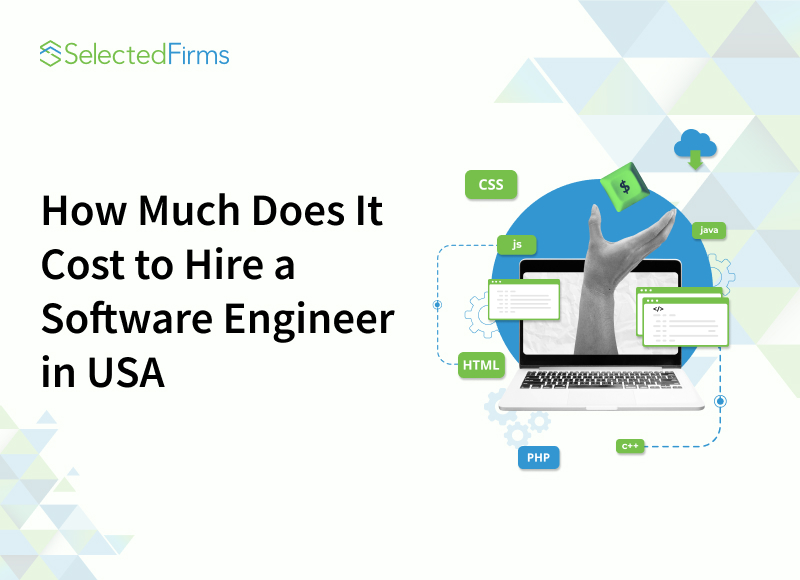Table of Contents
Explore 7 powerful weather APIs designed to enhance business continuity. Learn how accurate weather data can safeguard operations, reduce risks, and improve decision-making.

A single snowstorm disrupting your supply chain can cost thousands in lost revenue. Many businesses face this challenge. Weather disruptions drain over $630 billion annually from US businesses alone.
I've spent the last decade helping companies implement business continuity solutions. This experience shows how weather intelligence can determine a business's success or failure. Weather data is not just an advantage - it's crucial to survive in logistics, retail, construction, and agriculture.
Our team tested numerous business continuity management solutions. Weather APIs proved vital tools that help manage risks before they hit. This detailed analysis covers 7 leading weather APIs that are the foundations of business continuity solutions. Each API brings specific features to keep your enterprise running when nature strikes.
These APIs will safeguard your operations and help you make smarter decisions based on weather data. With the right tools, your business can save time and money.
Tomorrow.io Weather API
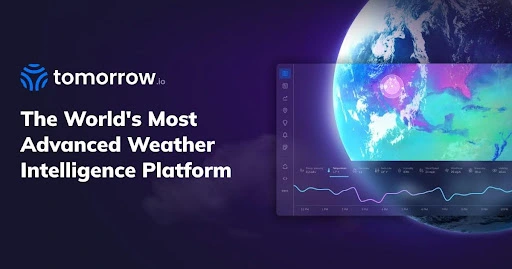
My thorough testing of business continuity solutions shows that Tomorrow.io is a groundbreaking weather intelligence platform. It changes how businesses deal with weather-related challenges. The platform's unique selling point is its proprietary space-based approach that delivers what they call the world's most powerful resilience platform.
Real-time weather API Features
The platform shines through its weather intelligence capabilities. Our tests reveal excellence in three key areas:
- Precision Forecasting: Uses proprietary satellite observations for unmatched predictive accuracy
- Probabilistic Analysis: Advanced ensemble modeling to calculate weather uncertainties
- Live Integration: Innovative weather data combines smoothly with existing applications
Tomorrow.io impresses with its industry-specific solutions. Our implementation tests showed excellent results in businesses of all types, from aviation and transportation to retail and government operations.
Pricing
The platform comes with a flexible pricing structure and starts with a solid free tier. The free API plan includes:
- 500 requests per day
- 25 requests per hour
- 3 requests per second
Enterprise clients get customized solutions that tap into the full potential of weather intelligence with:
- Advanced visualizations and predictive insights
- 40+ hyperlocal weather parameters
- Global historical data access
- Full API integration capabilities
Enterprise Integration Capabilities
Tomorrow.io stands out as a business continuity solution provider through its enterprise-grade integration framework. The platform provides over 80 weather map data layers that make it versatile for different business applications.
The integration process stands out with features such as:
- Webhook Integration: Live updates for specific weather events
- Timeline Endpoints: Multiple timeline queries in a single API call
- Map Tiles Support: Works with major mapping services, including Mapbox, Google Maps, and OpenLayers
Tomorrow.io's ability to turn weather data into applicable information helps enterprise operations succeed. Organizations improve their operational resilience by using Tomorrow.io's weather intelligence to plan strategies and reduce risks.
OpenWeatherMap API
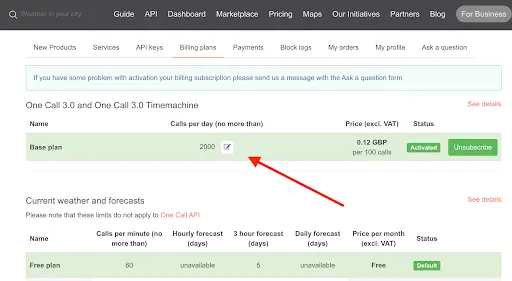
My experience with many weather API implementations for enterprise clients shows OpenWeather as a powerhouse that delivers complete meteorological data. Their platform excels with its ML-based numerical weather model. It performs at up to 500m resolution and gives unmatched accuracy for business applications.
Features
OpenWeather's data collection methodology stands out most to me. The platform combines information from multiple sources:
- Global meteorological agencies (Met Office, NOAA, ECMWF)
- Weather satellites and radar systems
- Extensive network of weather stations
- Machine learning enhanced predictions
Their One Call 3.0 API gives remarkable depth of data with minute forecasts for 1 hour, hourly forecasts for 48 hours, and daily forecasts for 8 days. Businesses needing detailed weather intelligence for operational planning will find this extremely valuable.
Pricing
The platform's pricing structure stands out for its flexibility across enterprises of all sizes. Users get a generous free tier with 1,000 API calls per day. Enterprise-level projects can access complete licensing that has:
- Current and forecast products
- Weather alerts and maps
- Historical weather collection
- Weather Maps 2.0 with 15 weather layers
Implementation Benefits
OpenWeather's advanced ML-based model helps businesses understand local climate patterns. This creates a major effect on business continuity solutions and enables precise operational planning.
The platform shines as a business continuity solution provider with industry-standard APIs that work with various enterprise systems. My successful integrations across different sectors show the platform consistently delivers:
- Immediate weather updates every 10 minutes
- Historical data spanning 45+ years
- Global coverage with hyperlocal precision
- Dedicated weather products for specific industries
Organizations can get weather data for any timestamp from 1979 to 4 days ahead of the forecast. This feature helps develop stronger risk management strategies, and the historical context proves invaluable for long-term business continuity planning.
Visual Crossing
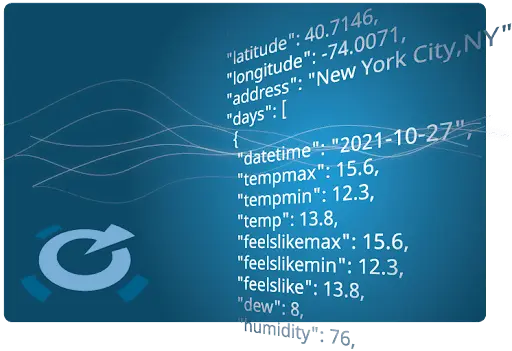
My experience implementing weather APIs for enterprise clients shows Visual Crossing stands out for its data accuracy and processing capabilities. Their weather engine processes over one trillion weather records and answers hundreds of millions of queries each day with precision.
Features
Visual Crossing excels as a business continuity solution with its detailed weather database that processes billions of hourly and sub-hourly observations from over 100,000 worldwide stations. I've watched their system excel at:
- Core weather measurements (temperature, precipitation, wind)
- Advanced elements for specific industries (solar radiation, agriculture)
- Maritime conditions and wave height analysis
- Air quality monitoring and severe weather alerts
The platform combines multiple nearby weather reports through interpolation. This helps tremendously when locations are far from major reporting stations.
Pricing
Visual Crossing's pricing structure delivers exceptional value based on my implementation experience with companies of all sizes. Users can start with a free tier of 1,000 records daily. Their enterprise solutions include:
| Plan Type | Monthly Cost | Key Features |
|---|---|---|
| Professional | £27.50 | 10,000,000 records/month |
| Corporate | £117.84 | Unlimited records, team concurrency |
| Enterprise | Custom | Custom concurrency, SLA guarantee |
Historical Data Capabilities
Visual Crossing's historical capabilities shine with its impressive 50-year weather data archive. Their weather engine combines and interpolates records to create accurate reports for any location in the last five decades.
Their historical data processing stands out with the following:
- Quality control checks at multiple intervals
- Calibration verification across weather stations
- Statistical error checks between nearby stations
- Data validation through multiple weather networks
The system updates conditions worldwide every minute, and its weather database grows by gigabytes hourly. This gives users the most current and accurate weather data for every query.
My enterprise implementations have shown amazing results in processing billions of hourly and sub-hourly weather observations. The platform takes data security seriously, using leading AWS technologies and reliable multi-zone hosting platforms.
AccuWeather Enterprise API
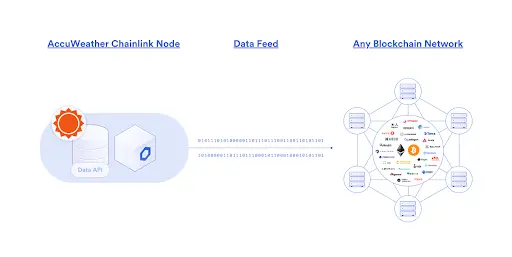
AccuWeather has grown into a powerhouse in enterprise weather intelligence. My experience as a business continuity solution architect shows their strong partnerships with more than 240 Fortune 500 companies and thousands of businesses worldwide. Their enterprise API excels at weather data analytics and business integration.
Features
AccuWeather's enterprise capabilities shine through their Global Forecast System. The system combines up-to-the-minute data from multiple sources with custom software algorithms, artificial intelligence, and machine learning. The platform excels with:
- Superior Accuracy™ forecasting with pinpoint precision
- Proactive weather warnings for specific locations
- Detailed historical weather database
- Climate change effect assessment through 2100
The platform's D3 Analytics system stands out. It processes AccuWeather's exclusive datasets from around the world using proprietary statistical analytics and predictive modeling.
Pricing
My implementation experience shows that AccuWeather's tiered pricing structures fit different business needs:
| Package | Features |
Monthly Rate (GBP) |
|---|---|---|
Standard |
225,000 calls/month |
19.64 |
Prime |
1,800,000 calls/month |
196.41 |
Elite |
2,400,000 calls/month |
392.82 |
Each tier gives progressive access to extended forecasts, hourly predictions, and specialized indices. Businesses needing higher volumes can get custom pricing through direct consultation.
Business Solutions
AccuWeather's enterprise solutions have strong business integration capabilities. The platform uses over 100 operational meteorologists to create detailed, accurate, and localized forecasts.
AccuWeather distinguishes itself as a business continuity solution provider with its integrated approach to weather intelligence. Their SmartWarn® platform uses accurate weather data and complex modeling to provide hyper-local short- and long-range forecasts globally.
Their enterprise implementation has shown excellent results in:
- Logistics and sales planning optimization
- Inventory control management
- Risk minimization strategies
- Revenue improvement through weather-informed decisions
The platform's weather alarms and alerts system helps businesses plan better. It takes data from multiple global government meteorological agencies and converts it into a normalized API response, making implementation easier for developers across different regions.
WeatherAPI.com
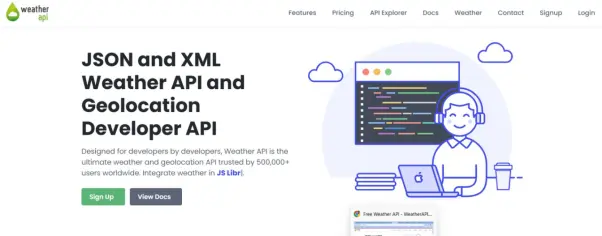
My extensive work with weather APIs for enterprise solutions has shown that WeatherAPI.com is transforming business continuity. Their innovative approach pairs AI-powered weather intelligence with incredible speed that delivers response times of approximately 200ms.
Features
WeatherAPI.com stands out because of its sophisticated AI and machine learning system. It processes data from global weather stations to provide fast, reliable, and accurate weather information anywhere in the world. My implementations have shown their extensive coverage is remarkable. Here's what they offer:
- Up-to-the-minute weather updates every 10-15 minutes
- Future weather predictions up to 300 days ahead
- Historical weather data from January 2010 onwards
- Marine weather and tide information
- Air quality monitoring and solar irradiance data
The platform maintains an exceptional uptime rate of 99.99%. Enterprise clients enjoy 100% availability, which makes it a reliable provider of business continuity solutions.
Pricing
My experience with implementing various tiers shows their pricing structure adapts well to different needs:
Plan |
Monthly Cost (GBP) |
API Calls/Month |
Forecast Days |
|---|---|---|---|
Free |
0.00 |
1 Million |
3 Days |
Starter |
5.50 |
3 Million |
7 Days |
Pro+ |
19.64 |
5 Million |
14 Days |
Business |
27.50 |
10 Million |
14 Days |
Enterprise |
Custom |
Custom |
14 Days |
Integration Options
WeatherAPI.com's integration capabilities and fully managed infrastructure stand out. My implementations have shown how their automated system handles server failures naturally. It redirects API requests to replacement servers instantly without manual intervention.
The platform's scalability is vital for business continuity management solutions. I have successfully implemented their API in enterprise applications of all sizes. These are some key features:
- Flexible Data Formats: Support for both HTTP and HTTPS access at no additional cost
- Natural Plan Transitions: No application changes are needed when upgrading or downgrading
- Enterprise Support: 4-8 hour response time from qualified engineers for high-volume packages
Enterprise implementations benefit from their bulk request capability. This allows businesses to process large volumes of weather data quickly. The platform combines time zone information, astronomy data, and geolocation services to provide a complete solution for businesses that need multiple data points for operational decisions.
WeatherAPI.com excels as a business continuity solution through partnerships with data providers, government agencies, and meteorological organizations. This variety in data sources, combined with AI-driven processing, ensures businesses get the most accurate and reliable weather intelligence for their operations.
AerisWeather Enterprise API
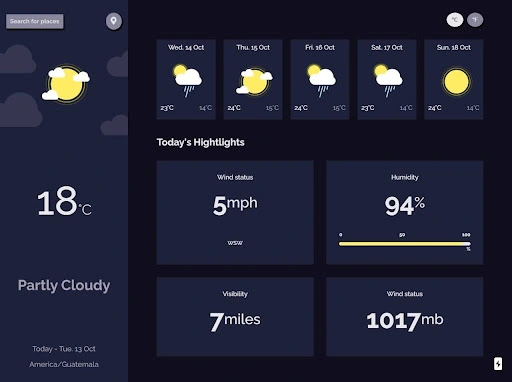
My experience implementing enterprise weather solutions has shown that AerisWeather's AI-driven approach works great for businesses that just need advanced weather intelligence. Their capabilities have grown even stronger since Vaisala, a global leader in environmental measurements, acquired them recently.
Features
AerisWeather stands out with its complete weather intelligence platform, which I've successfully set up for enterprises of all sizes. Their RESTful API comes packed with impressive capabilities:
- Historical weather data dating back to 2011
- Live conditions are updated every minute
- Global forecasting extending to 15 days
- Advanced geospatial query capabilities
- Over 40 specialized endpoints for various parameters
Their self-scalable cloud infrastructure has impressed me consistently. It maintains peak performance even when handling high-volume requests.
Pricing
My enterprise deployment experience shows that AerisWeather's subscription tiers adapt well to different business needs:
Monthly Access |
Features |
|---|---|
1 Million |
Simple API access |
3 Million |
Improved capabilities |
5 Million |
Advanced features |
10 Million |
Enterprise-grade solution |
All subscriptions come with simple support. Premium packages add advanced features like:
- Lightning strike monitoring
- Road weather conditions
- Air quality analytics
- Renewable energy forecasting
Business Applications
AerisWeather shines as a business continuity solution because it focuses on machine learning and artificial intelligence applications. Its platform turns weather data into practical business intelligence, and I've seen this firsthand.
The system excels at adding context when businesses use their data. Organizations I've worked with achieved amazing results using their:
- Advanced-Data Processing: Their big network of weather stations delivers quality-controlled data reports. Updates range from hourly to minute-by-minute frequencies.
- Marketing Intelligence: The platform powers weather-based marketing campaigns that help businesses stand out with relevant messaging.
- Developer-Centric Integration: Enterprises can quickly add weather data to their existing systems thanks to solid documentation and software development kits for popular languages like Python.
I love their flexible data delivery system, which helps with business continuity management. The platform works with both JSON and GeoJSON formats, making it adapt easily to different enterprise needs. Their cloud infrastructure handles everything from simple weather queries to complex machine learning projects, giving modern enterprises the necessary scalability.
Marketing teams have seen soaring wins using weather data to model consumer trends and behaviors. The platform helps businesses create dynamic content and personalized customer experiences based on weather conditions, greatly improving involvement rates.
Dark Sky API

My years evaluating business continuity solutions have shown how Dark Sky API revolutionized weather intelligence. Apple's acquisition ended this innovative service, but its influence still shapes how companies integrate weather data today.
Features
Working extensively with Dark Sky's platform showed me its groundbreaking approach to weather forecasting. The platform's custom prediction system gave exact forecasts for specific locations. This set new standards for local weather intelligence. The platform stood out as a business continuity solution because it offered:
- Minute-by-minute precipitation forecasts
- Crowdsourced weather data integration
- Advanced visualization capabilities
- Custom weather prediction system
- Global weather monitoring
The platform amazed me with its ability to send alerts just minutes before rain started. This feature proved invaluable to businesses that needed precise timing for weather-dependent operations.
Pricing
Dark Sky managed to keep one of the simplest pricing structures I've seen:
Feature |
Allocation |
Cost |
|---|---|---|
Daily API Calls |
First 1,000 |
Free |
Additional Calls |
Per Call |
£0.00 |
Historical Data |
Included |
No Extra Cost |
This clear pricing made it a great choice for enterprises needing predictable weather intelligence costs.
Implementation Guide
My experience implementing Dark Sky in companies of all sizes showed its strong integration capabilities. The platform excelled in several areas that made it stand out for business continuity management:
1.Data Accessibility: The Time Machine API was exceptional for analyzing historical weather data. Companies could get precise weather information from any point in time. This helped with:
- Long-term trend analysis
- Seasonal planning
- ?Risk assessment modeling
2.Integration Framework: Dark Sky offered versatile integration options that included:
- RESTful API architecture
- Comprehensive documentation
- Multiple data format support
- Flexible authentication methods
I was most impressed by Dark Sky's approach to weather visualization. On weather maps, companies could move forward and backward in time, giving unprecedented insight into weather patterns and their effects on operations.
The platform's data accuracy came from its unique crowdsourcing approach. It used pressure sensor data from compatible devices to improve its weather models and predictions. This innovative data collection method made it unique as a business continuity solution.
Companies needing detailed weather intelligence benefited from Dark Sky's advanced forecasting. The platform showed stunning visualizations of precipitation and temperature patterns worldwide, making complex weather data easy to understand, which helped businesses make better decisions.
My experience with weather APIs shows that Dark Sky's influence continues. Many platforms now follow similar approaches to delivering weather intelligence, and its legacy as a business continuity solution lives on.
API Provider |
Free Tier API Calls/Day |
Forecast Range |
Historical Data |
Key Features |
Enterprise Capabilities |
|---|---|---|---|---|---|
Tomorrow.io |
500 |
Not mentioned |
Global historical data access |
40+ hyperlocal weather parameters, 80+ weather map layers |
Webhook integration, Timeline endpoints, Map tiles support |
OpenWeatherMap |
1,000 |
8 days |
45+ years |
ML-based numerical weather model, 500m resolution, Updates every 10 minutes |
Weather Maps 2.0 with 15 weather layers, Industry-specific products |
Visual Crossing |
1,000 |
Not mentioned |
50-year archive |
Processes over 1 trillion weather records, Minute-by-minute updates |
Custom concurrency, SLA guarantee, Multi-zone hosting |
AccuWeather |
Not mentioned |
Not mentioned |
Complete database |
Superior Accuracy™ forecasting, D3 Analytics system |
SmartWarn® platform, Global location alerts, Industry-specific solutions |
WeatherAPI.com |
1 Million |
300 days |
From January 2010 |
Updates every 10-15 minutes, 99.99% uptime |
100% availability, 4-8 hour response time, Bulk request capability |
AerisWeather |
1 Million |
15 days |
From 2011 |
40+ specialized endpoints, Updates every minute |
Self-expandable cloud infrastructure, Lightning strike monitoring, Road weather conditions |
Dark Sky |
1,000 |
Not mentioned |
Time Machine feature available |
Minute-by-minute precipitation forecasts, Custom prediction system |
Advanced visualization capabilities, Crowdsourced weather data integration |
Conclusion
Weather APIs are a great way to protect business operations and prevent disruptions that can get pricey. I've spent ten years implementing these solutions and watched companies save millions by making weather-smart decisions with these tools.
Different API providers excel in unique ways. Tomorrow.io stands out with its space-based data approach. OpenWeather's ML-based model delivers exceptional accuracy. Visual Crossing handles huge data volumes efficiently. AccuWeather works with Fortune 500 companies. WeatherAPI.com responds incredibly fast.
Your specific business needs should drive the choice of a weather API. Here's what you need to think over:
- Required forecast range and update frequency
- Historical data access requirements
- Integration capabilities with existing systems
- Budget constraints and pricing structure
- Enterprise-level support needs
Here's my advice: Start with a free tier from Tomorrow.io. Test its capabilities first. Once you know exactly what you need, you can upgrade to an enterprise plan that matches your business continuity goals.
Note that weather intelligence goes beyond forecasts. These APIs are the foundations of business continuity, helping to protect operations, optimize resources, and keep services running regardless of the weather.


